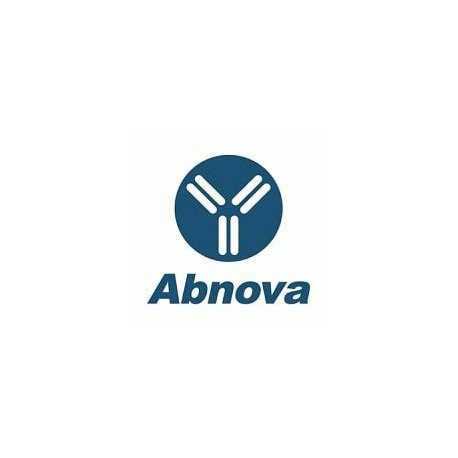Cart 0 Product Products (empty)
No products
To be determined Shipping
0,00 € Total
Prices are tax excluded
Product successfully added to your shopping cart
Quantity
Total
There are 0 items in your cart. There is 1 item in your cart.
Total products (tax excl.)
Total shipping (tax excl.) To be determined
Total (tax excl.)
Data sheet of PRNP monoclonal antibody, clone EM-20
| Brand | Abnova |
| Product type | Primary antibodies |
| Reactivity | Human |
| Host species | Mouse |
| Applications | WB-Ti |
More info about PRNP monoclonal antibody, clone EM-20
| Brand: | Abnova |
| Reference: | MAB6472 |
| Product name: | PRNP monoclonal antibody, clone EM-20 |
| Product description: | Mouse monoclonal antibody raised against recombinant PRNP. |
| Clone: | EM-20 |
| Isotype: | IgG2a |
| Gene id: | 5621 |
| Gene name: | PRNP |
| Gene alias: | ASCR|CD230|CJD|GSS|MGC26679|PRIP|PrP|PrP27-30|PrP33-35C|PrPc|prion |
| Gene description: | prion protein |
| Immunogen: | Recombinant protein corresponding to human PRNP. |
| Form: | Liquid |
| Recommend dilutions: | Western Blot (0.5 ug/mL) The optimal working dilution should be determined by the end user. |
| Storage buffer: | In PBS, pH 7.4 (0.09% sodium azide) |
| Storage instruction: | Store at 4°C. Do not freeze. Aliquot to avoid repeated freezing and thawing. |
| Note: | This product contains sodium azide: a POISONOUS AND HAZARDOUS SUBSTANCE which should be handled by trained staff only. |
| Product type: | Primary antibodies |
| Host species: | Mouse |
| Antigen species / target species: | Human |
| Specificity: | This antibody recognizes human prion protein (PrP). Diglycosylated form of PrP has ~40 KDa, monoglycosylated form ~30 KDa, and nonglycosylated form ~19-21 KDa. This antibody is suitable for discrimination between normal cellular prion protein (PrPc) and its conformationally changed form (PrPSc) prionprotein. |
| Reactivity: | Human |
| Application image: |  |
| Application image note: | Western Blotting analysis of Creutzfeld-Jakob disease (CJD) negative (Lane 1, 2) and CJD positive (Lane 3, 4) human brain material using PRNP monoclonal antibody, clone EM-20 (Cat # MAB6472). CJD positive patient has proteinase K resistent prion protein. Lane 1, 4 : Samples with proteinase K treatment Lane 2, 3 : Samples without proteinase K treatment. |
| Applications: | WB-Ti |
| Shipping condition: | Blue Ice |
| Publications: | Glycosylation modification of human prion protein provokes apoptosis in HeLa cells in vitro.Yang Y, Chen L, Pan HZ, Kou Y, Xu CM. BMB Rep. 2009 Jun 30;42(6):331-7. |


